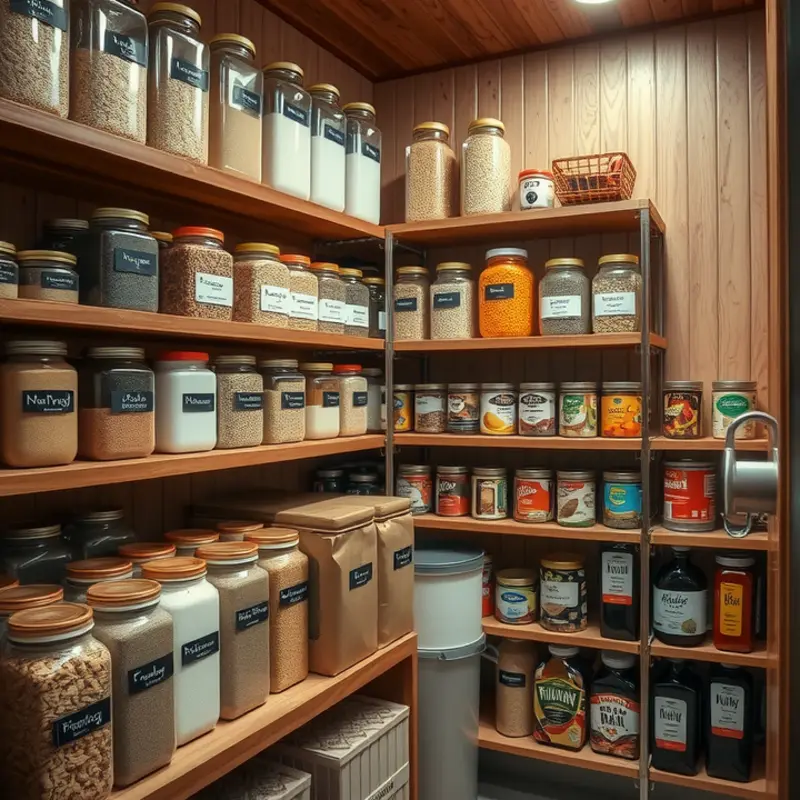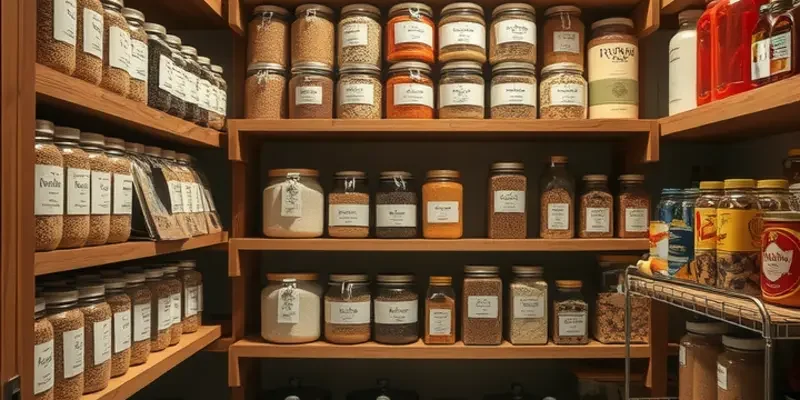Meal planning and prep don’t have to be time-consuming or complicated. With a few practical strategies, busy individuals and families can simplify their cooking routines and create healthy, delicious meals without the hassle. By focusing on ingredient organization and efficiency, you can maximize your time in the kitchen and minimize stress during busy weeknights and weekends. Let’s explore some easy-to-implement tips to streamline your meal planning and prep process, making it a breeze for both you and your family.
Mastering Your Pantry: A Step-by-Step Guide

In the modern kitchen, a well-organized pantry is crucial for efficient meal preparation. Categorizing your ingredients is the first step. Start by sorting items by type: grains, canned goods, spices, baking supplies, and snacks. This approach not only saves time but also ensures that similar items are stored together, reducing the likelihood of purchasing duplicates unknowingly.
After categorizing, it’s time to move onto labeling. Invest in a set of reusable labels or create your own. Label each shelf and container clearly. This simple act can prevent misplacing items and significantly enhance your pantry’s usability. Consider labeling sections with usage frequency in mind; place everyday items at eye level for easy access.
Another strategy is implementing a FIFO system—First In, First Out. Organize your foods so older items are in the front, and newly purchased products go at the back. This method helps in minimizing food waste, keeping food fresh, and maintaining a clutter-free pantry.
Storage solutions play a vital role in maintaining organization. Store loose items such as flour, sugar, or pasta in clear, airtight containers. This not only protects your ingredients from pests but also makes it easier to visually track your inventory. Additionally, invest in stackable or modular containers to maximize space.
Maintenance is key to preserving your pantry’s organization. Set aside time each month to clean shelves, check expiration dates, and adjust your organization based on your evolving needs. This regular audit keeps your pantry efficient and ensures that everything has a designated spot.
Changing the way you store ingredients can contribute to more sustainable habits. For tips on minimizing kitchen waste and safer storage practices, check out this guide on eco-smart kitchen storage.
Finally, embrace smart technology if possible. Utilizing apps that track your pantry inventory can streamline your meal planning. These apps help you monitor stock levels and suggest recipes based on available ingredients, alleviating the stress of last-minute meal decisions.
By mastering your pantry with these steps, you create a foundation for easier, stress-free cooking sessions. An organized pantry not only supports meal prep but also encourages healthier eating habits by keeping nutritious ingredients within reach.
Efficient Meal Kits: Streamline Your Weekly Prep

Creating efficient meal kits can revolutionize your approach to meal preparation and ensure you make the most of your time in the kitchen. Instead of scrambling for ingredients every evening, organizing your weekly meals around meal kits can significantly cut down on decision fatigue. This chapter will guide you through the process of assembling these kits, storing them effectively, and using them creatively.
Start by planning one or two meals per day that you want to include in your kits. Select recipes that require similar ingredients to reduce the number of items you need to shop for. Once your meal plan is set, the assembly can begin. Organize the ingredients for each dish into separate bundles—each kit should contain all spices, grains, proteins, and vegetables needed for its respective meal. Label each kit clearly with the day of the week or meal type, using reusable containers or bags to keep everything tidy.
Proper storage is crucial to preserving freshness and preventing spoilage. For instance, proteins such as chicken or fish should be stored in airtight containers in the refrigerator or freezer, depending on when you plan to use them. Vegetables can be pre-chopped and stored in separate containers, ideally grouped according to when they will be added during cooking. For guidance on optimal storage techniques that also focus on eco-friendliness, consider exploring eco-smart storage solutions.
Now, with meal kits at your disposal, you can transform these ingredients into flavorful dishes with minimal effort. Consider a stir-fry that combines pre-chopped vegetables, a protein of your choice, and a sauce from your kit. Or a pasta dish where the ingredients can be quickly tossed together for a delightful yet effortless meal. These meal kits can be especially useful during busy evenings when you want home-cooked meals without the stress.
In addition to the basics, think about including flavor-boosting ingredients, such as herbs or spice blends, in your kits for added taste variety. This approach not only ensures diverse meal experiences but also keeps your taste buds delighted. By reducing the preparatory steps, meal kits better enable spontaneous cooking experimentation, transforming potentially hectic evenings into calm culinary experiences.
In conclusion, creating and utilizing meal kits can be a game-changer in managing a bustling lifestyle while maintaining home-cooked meal quality. It provides an organized framework that not only preserves time but also diminishes waste and encourages nutritious eating habits. This strategic approach to meal prep will leave you wondering how you ever managed without it.
Final words
Incorporating efficient ingredient organization strategies into your meal planning can greatly simplify your weekly cooking routine. A well-structured pantry ensures that you can find what you need quickly, while meal kits make it easy to whip up healthy meals without the stress. Remember, the key to successful meal prep is consistency and making a habit of organizing. With a little time and effort spent upfront, you’re setting yourself up for a week of smoother, more enjoyable cooking experiences. Embrace these strategies, and watch how they can positively impact your daily meals and family time.







